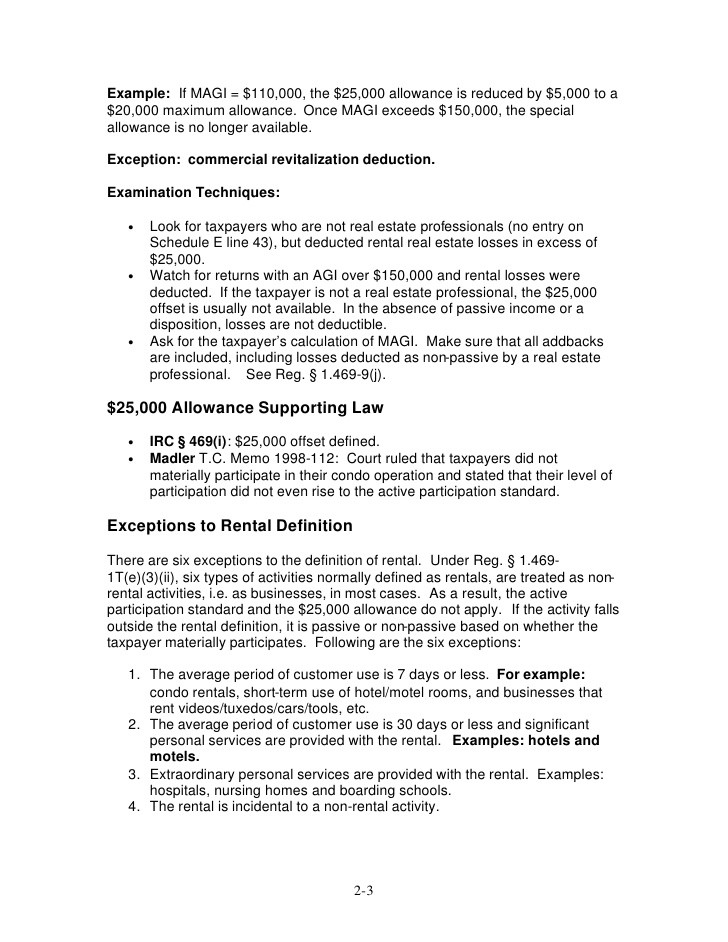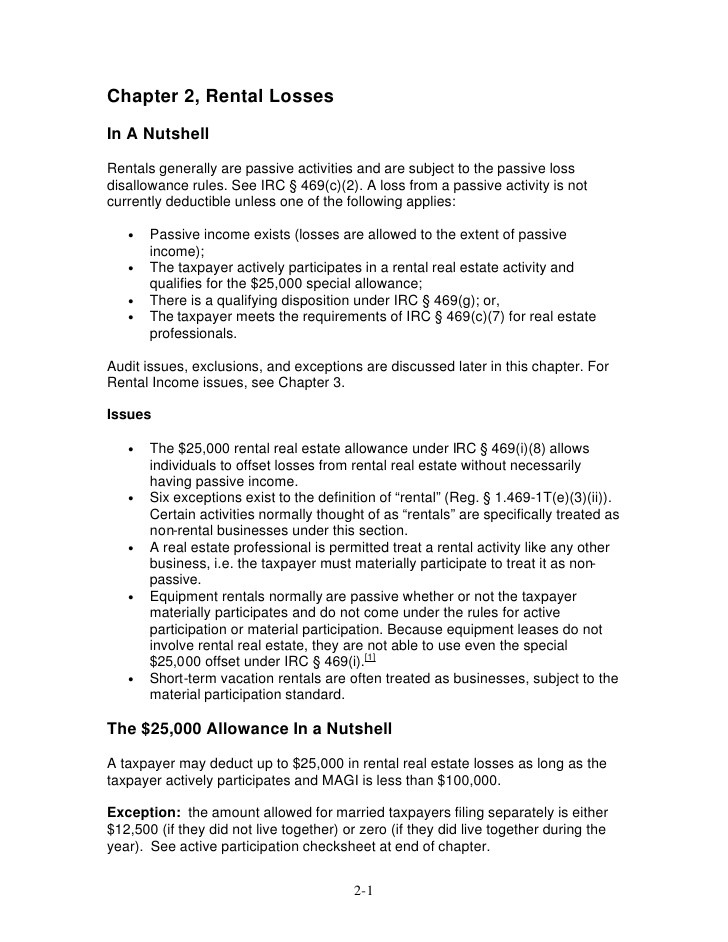Passive Activity Loss (PAL) Rules IRS Limits on Deducting Passive Losses
Post on: 18 Июнь, 2015 No Comment

IRS PAL rules severely limit the ability to deduct passive losses from other income.
It might seem strange for someone to invest money in a business designed to lose money. However, thirty or more years ago this used to happen all the time because money-losing businesses could provide wealthy taxpayers with valuable tax benefits.
Money-losing businesses were valuable tax shelters because taxpayers could freely deduct all the losses they incurred from such investments from the other income they earned. This led to enormous abuses. In the 1980s, wealthy individuals invested in real estate limited partnerships and other tax shelters created solely to generate large losses through depreciation, interest, and other deductions. The investors in these tax shelters would use their paper losses to offset their other real income. The tax benefits obtained could far exceed the amount of money invested in the tax shelter.
All this came to an abrupt end in 1986, when Congress enacted the passive activity loss rules. (I.R.C. Section 469.) These rules were designed to limit a taxpayer’s ability to use rental or business losses to offset other income. The PAL rules apply to all business activities, but are particularly strict for rental real estate because real estate was the primary tax shelter.
The passive activity loss rules created a special category of income and loss called passive income or loss. There are two types of passive income or loss. Passive income or loss comes from:
- businesses in which you don’t materially participate, and
- all rental properties you own.

It’s easy to know whether you have income or loss from real estate rentals. But the concept of material participation is more complicated. You materially participate in a business only if you are involved with its day-to-day operations on a regular, continuous, and substantial basis. (I.R.C. Section 469(h).) The IRS has created several tests to determine material participation, based on the amount of time you spend working at it.
For example, a person who owns and spends all of his or her time running a restaurant actively participates in the business. The income or loss that person incurs from the business is active, not passive. On the other hand, a person who invests in a restaurant, but spends no time at all actually working in the business, does not materially participate in the business. His or her income or loss from the restaurant is passive income or loss.
Why is this important? Because you can deduct passive losses only from passive income, not from income from other sources such as earnings from a job or a business you actively manage. In addition, passive income does not include investment or dividend income.
Example: Sidney is a successful doctor. This year, he has $200,000 in income from his practice (salary income) and also earns $50,000 in income from investments (investment income). Sidney invests $25,000 in a real estate limited partnership tax shelter. The partnership owns several rental properties that operate at a substantial loss. At the end of the year, the partnership informs Sidney that his share of the partnership’s annual operating loss is $75,000. Sidney invested in the limited partnership because he wanted to use his share of the losses it generated to reduce his taxable income from his medical practice. However, come tax time, he’s in for a shock. Because passive losses are only deductible from passive income, Sidney cannot deduct his $75,000 passive loss from his medical practice income or his investment income. He earned no passive income during the year so he can’t use his passive loss at all this year. His real estate tax shelter turned out to be useless.
This is what the passive activity loss rules are intended to do: prevent you from deducting your passive losses (such as from rental activities) from your non-passive income. Thus, there is no point in investing in real estate rentals or other passive activities just to incur tax losses because you won’t be able to use these losses to offset your other non-passive income.
The moral: Don’t invest in money-losing real estate rentals or any money-losing business which you don’t actively work with the goal of using the losses reduce your taxable income from other sources. It won’t work.
To learn more about what you can or can’t deduct, see Nolo’s section on Business Deductions .














